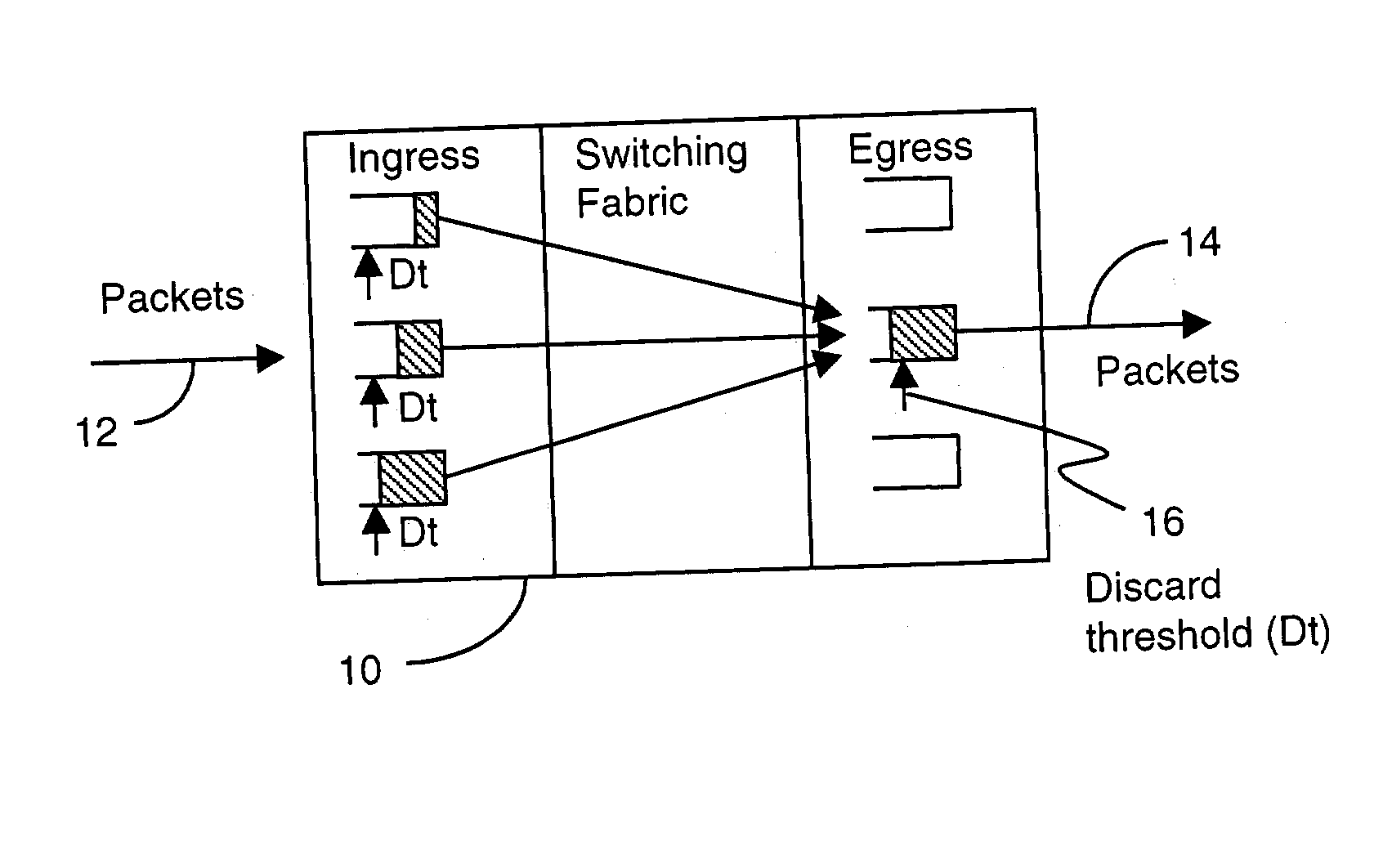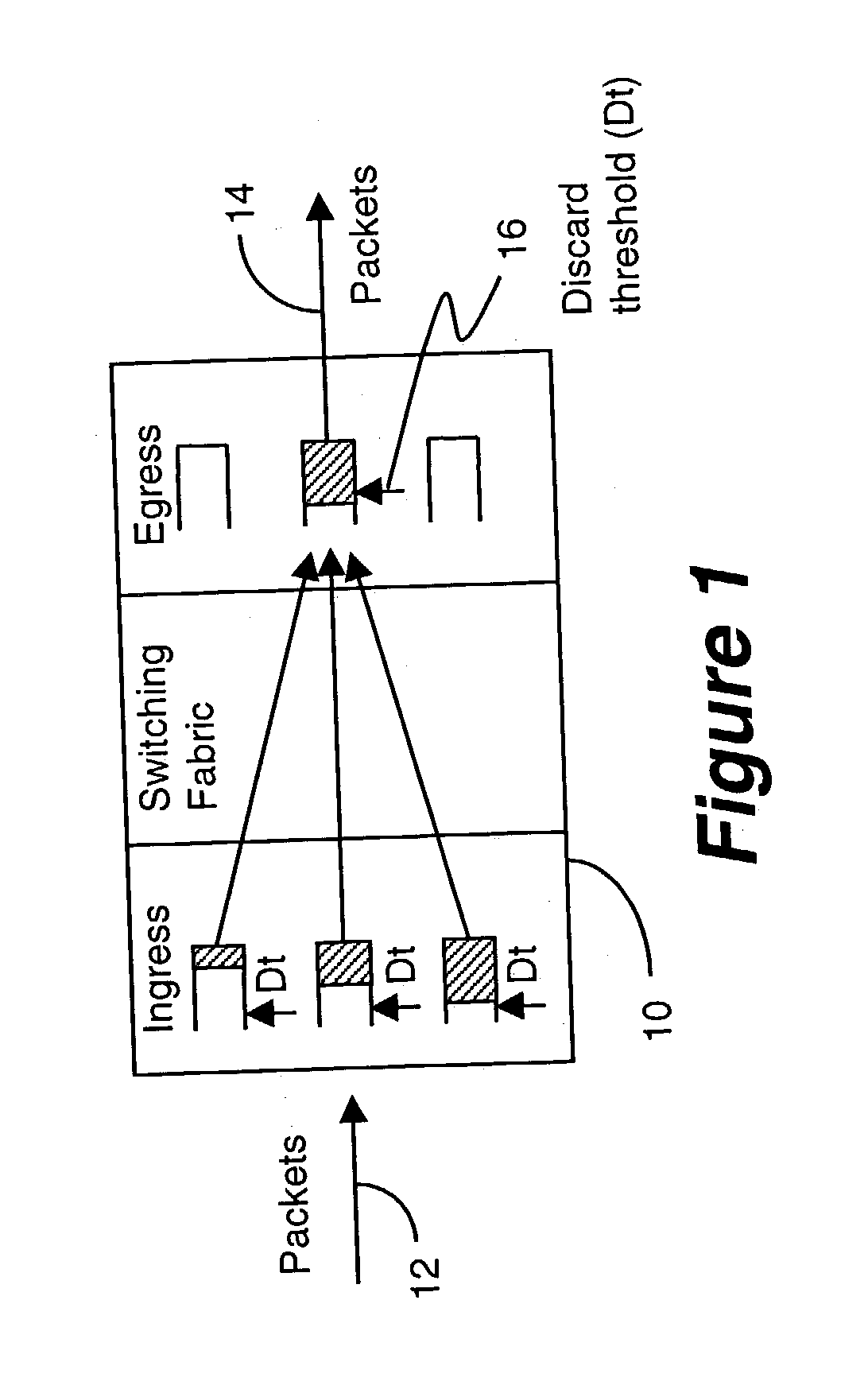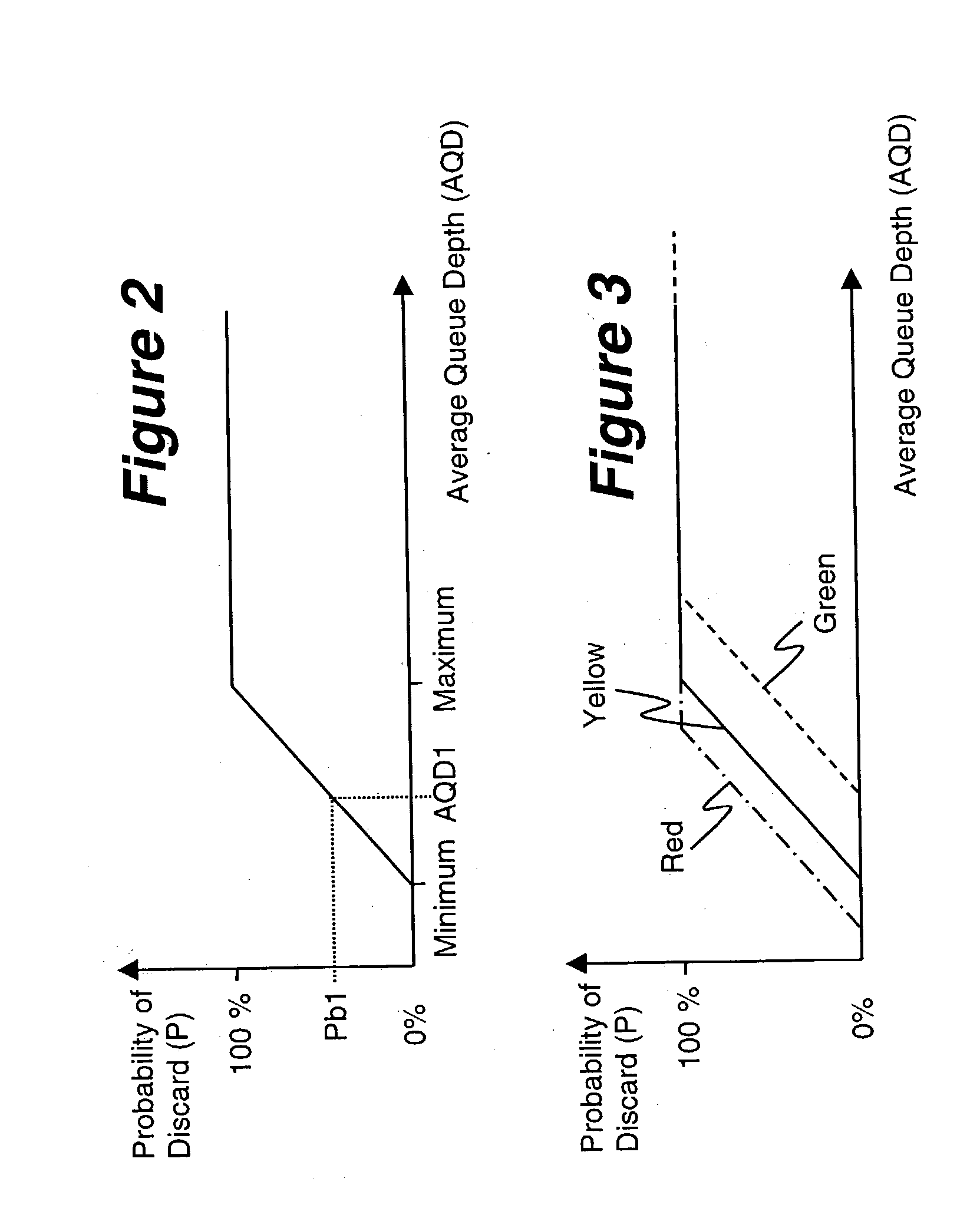Random early packet discard (RED)
a technology of random early packets and packets, applied in data switching networks, frequency-division multiplexes, instruments, etc., can solve the problem of additional processing time for extra multiplication, packets can be dropped from a single tcp connection, and additional problem of calculating average queue depth after idle times, etc. problem, to achieve the effect of improving the accuracy of calculating average depth, reducing processing power, and improving the effect of packet discard operation
- Summary
- Abstract
- Description
- Claims
- Application Information
AI Technical Summary
Benefits of technology
Problems solved by technology
Method used
Image
Examples
Embodiment Construction
[0042] According to an embodiment of the invention, the discard probabilities are summed for each colour, instead of counting the number of packets (count) and multiplying that by the current discard probability P(colour), as in the prior art. The resulting sum (discard probability sum or P.sub.sum(colour)) is compared to the random number (RN). If P.sub.sum(colour) is greater than RN then the packet is discarded and P.sub.sum(colour) is set to zero, otherwise the packet is accepted and the new discard probability P(colour) is added to P.sub.sum(colour) (i.e., P.sub.sum(colour)=P.sub.sum(colour)+P(colour)). The result is packet discards for each colour that are uniformly distributed in time similar to the prior art URV method, but requires 50% less processing cycles to implement. This improvement in efficiency allows uniformly distributed packet discards to be achieved on OC-192 rate connections.
[0043] A new discard algorithm in accordance with one embodiment is therefore as follows...
PUM
 Login to View More
Login to View More Abstract
Description
Claims
Application Information
 Login to View More
Login to View More - R&D
- Intellectual Property
- Life Sciences
- Materials
- Tech Scout
- Unparalleled Data Quality
- Higher Quality Content
- 60% Fewer Hallucinations
Browse by: Latest US Patents, China's latest patents, Technical Efficacy Thesaurus, Application Domain, Technology Topic, Popular Technical Reports.
© 2025 PatSnap. All rights reserved.Legal|Privacy policy|Modern Slavery Act Transparency Statement|Sitemap|About US| Contact US: help@patsnap.com



